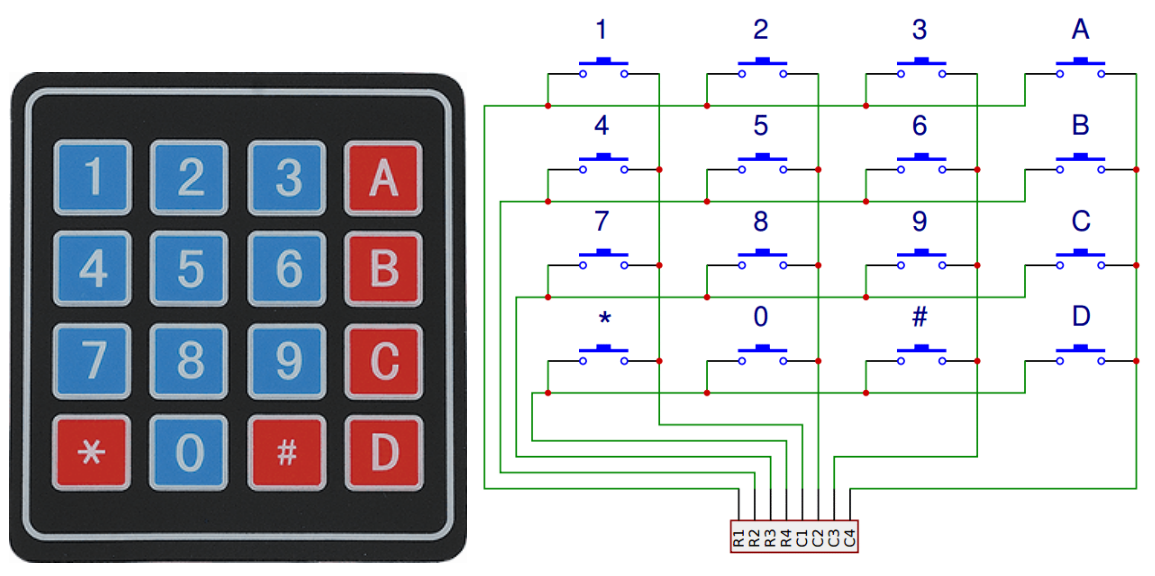Note
Hello, welcome to the SunFounder Raspberry Pi & Arduino & ESP32 Enthusiasts Community on Facebook! Dive deeper into Raspberry Pi, Arduino, and ESP32 with fellow enthusiasts.
Why Join?
Expert Support: Solve post-sale issues and technical challenges with help from our community and team.
Learn & Share: Exchange tips and tutorials to enhance your skills.
Exclusive Previews: Get early access to new product announcements and sneak peeks.
Special Discounts: Enjoy exclusive discounts on our newest products.
Festive Promotions and Giveaways: Take part in giveaways and holiday promotions.
👉 Ready to explore and create with us? Click [here] and join today!
Keypad¶
A keypad is a rectangular array of 12 or 16 OFF-(ON) buttons. Their contacts are accessed via a header suitable for connection with a ribbon cable or insertion into a printed circuit board. In some keypads, each button connects with a separate contact in the header, while all the buttons share a common ground.

More often, the buttons are matrix encoded, meaning that each of them bridges a unique pair of conductors in a matrix. This configuration is suitable for polling by a microcontroller, which can be programmed to send an output pulse to each of the four horizontal wires in turn. During each pulse, it checks the remaining four vertical wires in sequence, to determine which one, if any, is carrying a signal. Pullup or pulldown resistors should be added to the input wires to prevent the inputs of the microcontroller from behaving unpredictably when no signal is present.
Example
2.1.8 Keypad (C Project)
3.1.8 Password Lock (C Project)
3.1.11 GAME– Guess Number (C Project)
2.1.8 Keypad (Python Project)
4.1.14 Password Lock (Python Project)
4.1.17 GAME– Guess Number (Python Project)